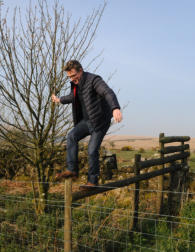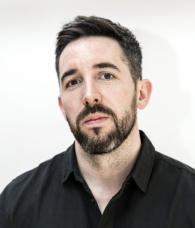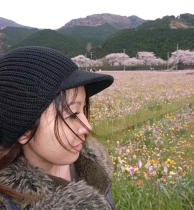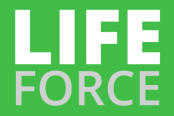

The magazine of the photo-essay

September back 2019 issue

“A free, really high quality photo-essay magazine. Fabulous!”
Stephen Fry. British actor, writer and film maker
Damian Bird
To commission him or to request prints of his work: damianbirdphotography.com
Damian Bird (born London, 1972) is a photographer, photojournalist and lecturer
with many years of experience, working in war zones and trouble spots around the
globe.
He was educated at Canford School and in Photography at the Surrey College of Art
and Design and at the London College of Communication where he studied for a post
graduate degree in Photojournalism.
In 2011 he founded Life Force magazine with his business partner and wife of 18
years, Alice. As well as Editing Life Force magazine, he is currently engaged in
photographing a series of photo-essays on English culture and has recently returned
to Afghanistan. His first book Seabird was released in November 2017 his latest book is
due to be release at the end of 2019.



Steve McCurry
Steve McCurry has been one of the most prominent voices in contemporary
photography for more than 30 years, with scores of magazine covers to his name,
over a dozen books, and hundreds of exhibitions around the world. A member of
Magnum Photos, McCurry has been recognised with the Robert Capa Gold Medal
and National Press Photographers Award.
Wikipedia
www.stevemccurry.com



He continues to have his work published in national and international newspapers and magazines including The Times,
the Telegraph, the Express, the Observer, GQ, Esquire, Daily Mail, Dazed & Confused, The Face, Country Life, Coast and
Geographical magazine. He lives in Devon, England with his wife, four children and
his dachshunds, Jessie, Rosie and Ted.
Manami Okazaki
To commission her or to request prints of her work: www.maki23.com/
MANAMI OKAZAKI has published many books on Japanese culture, art, crafts, and
fashion, including Kimono Now and Kawaii! Japan’s Culture of Cute (both by Prestel).
Her journalism has been featured in the Japan Times, Wall Street Journal, South China
Morning Post, Lonely Planet, and other global media outlets. She lives in Japan.










Andrew Moore
To commission him or to request prints of his work: www.andrewlmoore.com
Wikipedia Andrew Lambdin Moore (26 March 1957, Old Greenwich, CT) is an American photographer and filmmaker known
for large format color photographs of Detroit, Cuba, Russia, the American High Plains, and New York’s Times Square
theaters. Moore’s photographs employ the formal vocabularies of architectural and landscape photography and the
narrative approaches of documentary photography and journalism to detail remnants of societies in transition. His
photographic essays have been published in monographs, anthologies, and magazines including The New York Times
Magazine, Time, The New Yorker, National Geographic, Harper’s Magazine, The New York Review of Books, Fortune, Wired,
and Art in America. Moore’s video work has been featured on PBS and MTV; his feature-length documentary about the
artist Ray Johnson, “How to Draw a Bunny,” won the Special Jury Prize at the 2002 Sundance Film Festival. Moore teaches
in the MFA Photography, Video and Related Media program at the School of Visual Arts in New York.

Edward Keating
To commission him or to request prints of his work: www.edwardkeating.com
Edward Keating has lived and worked as a photographer in New York City since1981. Like previous generations of street
photographers, he taught himself how to photograph by chronicling street life of everyday New Yorkers. Ten years later he
was hired as a Staff Photographer at The New York Times where he covered national and international news and was a
regular contributor to the Sunday New York Times Magazine. In addition, he co-founded “Vows,” The New York Times
wedding column. In 2002, Keating won the Pulitzer Prize for his coverage on the attacks of 9/11. He has also been a regular
contributor to Time Magazine, Rolling Stone, “W” Magazine and New York Magazine.
Keating’s work is in the permanent collections of The Museum of Modern Art in New York City and The Norton Museum of
Art in West Palm Beach, Florida. His one-person exhibitions include; The Camera Club of New York, The Leica Gallery-New
York and at Visa Pour l’image in Perpignan, France. In 2008, Keating exhibited his collection “New York” alongside Robert
Frank’s “The Americans” at The Pingyao International Photography Festival in Pingyao, China and his collection on Route 66
was featured at Bursa Fotofest in Bursa, Turkey, in 2011.
Keating is married to photo editor/photographer, Carrie Boretz. They have two lovely daughters Caitlin and Emily. Contact
Press Images in New York City represents Keating.




Ivor Prickett
To commission him or to request prints of his work: www.ivorprickett.com
Most recently Ivor’s work has focused on the fight to defeat ISIS in Iraq and Syria,
with a particular focus on the battle for Mosul. Working exclusively for the The New
York Times he has spent months on the ground reporting in both words and pictures
to produce the series 'The Battle For Mosul'
Based in the region since 2009 Ivor documented the 'Arab Spring' uprisings in Egypt
and Libya, working simultaneously on editorial assignments and his own long term
projects.
Travelling to more than ten countries between 2012 and 2015 he documented the
Syrian refugee crisis in the region as well as Europe, working closely in collaboration with UNHCR to produce the body of
work ‘Seeking Shelter’
‘Dreams of a Homeland’ is the result of spending extended periods of time in northern Iraq and Syria with the Kurdish
people striving for recognition in the region.
With a particular interest in the aftermath of war and its humanitarian consequences, his early projects focused on stories
of displaced people throughout the Balkans and Caucasus and culminated in the form of ‘Returning Home’.
Ivor’s work has been recognised through a number of prestigious awards including POYI, Foam Talent, The Taylor Wessing
Portrait Prize and The Ian Parry Scholarship.
His pictures have been exhibited widely at institutions such as The Getty Gallery London, Foam Gallery Amsterdam and
The National Portrait Gallery London. He is represented by Panos Pictures in London and holds a degree in Documentary
Photography from the University of Wales Newport.





Stephen McCoy
To commission him or to request prints of his work: www.mccoywynne.co.uk
I was born in 1956 in Kensington, a working-class district of Liverpool. Our family moved several times during my childhood
eventually residing in the house self-built by my Father in Ainsdale, Southport.
After youthful ambitions to become a zoologist foundered on the rocks of Physics and Chemistry I enrolled on the
Foundation Art course at Southport College of Art in 1974. This was the best year of study in my education and probably the
heyday of art schools: great staff, unfettered possibilities, freedom to experiment, potentials encouraged and creativity at
the forefront.
I was accepted at Manchester Polytechnic in 1975. Originally with an interest in illustration, I concentrated on photography
in the final two years. I gained my degree, but considered myself self-taught: virtually no projects, hardly any staff guidance
or contact, apart from some theory lectures by Dr George Wakefield and an occasional slide show. I learned from books by
Michael Langford, Ansel Adams and my fellow student Bruce McGowan who went on to become a cinematographer (Letter
to Brezhnev); he tragically died in 2004.
In my final year I started to use a MPP 5x4 camera, which I purchased second hand. I was inspired primarily by Walker Evans
and, perhaps unfashionably, by Edward Weston and Ansel Adams. Mastering the zone system and other technical aspects
was very important to me.After Christmas our tutor, Laurence Cutting, left and Martin Parr (an ex Manchester graduate) was
brought in to teach one day a week. He introduced me to the work of Chris Killip whose dedication inspired me to greater
efforts.
After graduating in 1978 I set up a darkroom in my parents house and worked cleaning cars for six months to save money
to buy a 5x4 enlarger. At this time I was making the first Housing Estate and Southport Pleasure-Land pictures.
In April 1979 I was employed as a photographic technician at Southport Art College. This was a big moment for me: I was
able to stop cleaning cars and was back in an academic environment. I continued to work on several projects and was
encouraged by Peter Hagerty at The Open Eye Gallery in Liverpool. I had my first exhibition of the Pleasure-Land
photographs there in 1979.
During my time as a technician I attended a five-day workshop at The Photographers Place (run by Paul Hill) with Lewis
Baltz. This was a seminal moment and made me think very hard about composition, subject matter and relevant
technical approaches.
I left my job after two years and attended Garnett College in Richmond London obtaining a Cert Ed in 1982. After a couple
of years part-time lecturing I was employed full-time at Hugh Baird College in Bootle teaching photography on a variety of
courses and setting up a BTEC in photography and HND in Visual Communication. During the decade of 1980 to 1990 I
was very active exhibiting and publishing work and also employed as a Photographer in Residence in Skelmersdale.
In 1990 I was part of a group show “In a New Light” at The Bluecoat in Liverpool (with my good friend Tom Wood). I showed
work from “Plight of the Trolley”. For a variety of reasons I gave up exhibiting (but not working) until the exhibition
“Quiescence” in 2008, part of the Capital of Culture celebrations, created in collaboration with photographer Stephanie
Wynne.
In 1997 Stephanie and I had formed the Partnership “McCoy Wynne”. We were both jaded from teaching and we
established a partnership to work both on commissions and personal projects. We attracted enough clients so that we
could leave lecturing completely.
In 2009 we were finalists in The Liverpool Art Prize and we continued to photograph collaboratively, but also separately, on
projects and commissions, exhibiting and publishing up to the present day. Three exhibitions are forthcoming in 2019.
A few years ago I became aware of Café Royal Books and sent examples from my archive to Craig. He was very supportive
and began to publish selections from my projects, some of which had been very rarely seen. This revival of interest is very
encouraging and Craig continues to print selections from my archive.











